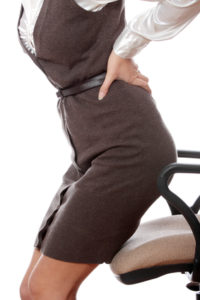 Back pain is a very common problem for which many people seek acupuncture and massage therapy. When it is severe or chronic, it extracts a cost. Back pain hampers and restricts mobility and therefore one’s independence and ability to move around and perform everyday tasks and duties, let alone recreational pursuits. If it becomes chronic it can precipitate psychological distress at the very least, sponsoring irritability and low mood and over time can lead to analgesia dependence, which can lead to even further complications. And this is just the human cost. The economic cost reveals the widespread nature of the condition. Consider the condition of Lower Back Pain (LBP) on its own:
Back pain is a very common problem for which many people seek acupuncture and massage therapy. When it is severe or chronic, it extracts a cost. Back pain hampers and restricts mobility and therefore one’s independence and ability to move around and perform everyday tasks and duties, let alone recreational pursuits. If it becomes chronic it can precipitate psychological distress at the very least, sponsoring irritability and low mood and over time can lead to analgesia dependence, which can lead to even further complications. And this is just the human cost. The economic cost reveals the widespread nature of the condition. Consider the condition of Lower Back Pain (LBP) on its own:
“A ‘cost-of-illness’ study of low back pain (LBP) in Australian adults… estimates the direct cost of LBP in 2001 to be AU dollars 1.02 billion. Approximately 71% of this amount is for treatment by chiropractors, general practitioners, massage therapists, physiotherapists and acupuncturists. However, the direct costs are minor compared to the indirect costs of AU dollars 8.15 billion giving a total cost of AU dollars 9.17 billion”.
Acupuncture features strongly amongst therapies investigated for their efficacy in treating back pain. Research has found that acupuncture works well alongside other approaches such as massage, mind-body techniques, manipulative therapy and so on. I find it works exceptionally well with Osteopathy.
An Indian research study found that “electro-acupuncture effectively relieves pain and improves autonomic status in patients with chronic low back pain”…and within the study “the acupuncture group showed a better response than the drug treatment group”. Electro-acupuncture is a technique whereby a TENS unit is connected to the inserted acupuncture needles and electrical impulses are conducted down the needle into the acupuncture point.
Alongside lower back pain, an enormous number of people suffer pain and/or tension in the upper back, shoulder and neck. Acupuncture and massage show enormous promise according to studies regarding their effectiveness in treating these areas of the body, which are often identified as stress-affected zones.
Resources
Walker BF, Muller R, Grant WD. Asia Pac J Public Health. 2003; 15(2): 79-87.
J Altern Complement Med. 2012 Apr; 18(4): 354-6
Indian J Physiol Pharmacol. 2011 Jan-Mar; 55(1): 25-36)
Irnich et al, BMJ 2001;322:1574).
Pain. 2010 Jul 22. [Epub ahead of print]).

